







WSNLA Leadership Awards Cultivating. Advocating. Promoting. Innovating. Award recipients are honored for their passion & work. Japanese Beetle Update on rule making & eradication e orts. Pollinator Resources Tools for educating your customers & Clients. 2022 | Vol. 74, Issue III







2 - The B&B Magazine Looking to grow? Let’s get started. Every new producer has to start somewhere. And it’s far from easy. We help give young, beginning and small farmers and ranchers a leg up with special financing options, educational opportunities, and hands-on, strategic advice to help you get started. So if you’re ready to start cultivating your dream, give us a call. We’d be happy to help. 800.743.2125 | northwestfcs.com
Weekly Column for August 29th, 2022 centered on A Few Tips To get the Most Out of Late Summer. Read the article at www.facebook.com/SunnysideNurseryWA
2022 | VOL 74. NO. III
Editor Breanne Chavez
Published Quarterly By: Washington State Nursery & Landscape Association. PO Box 219
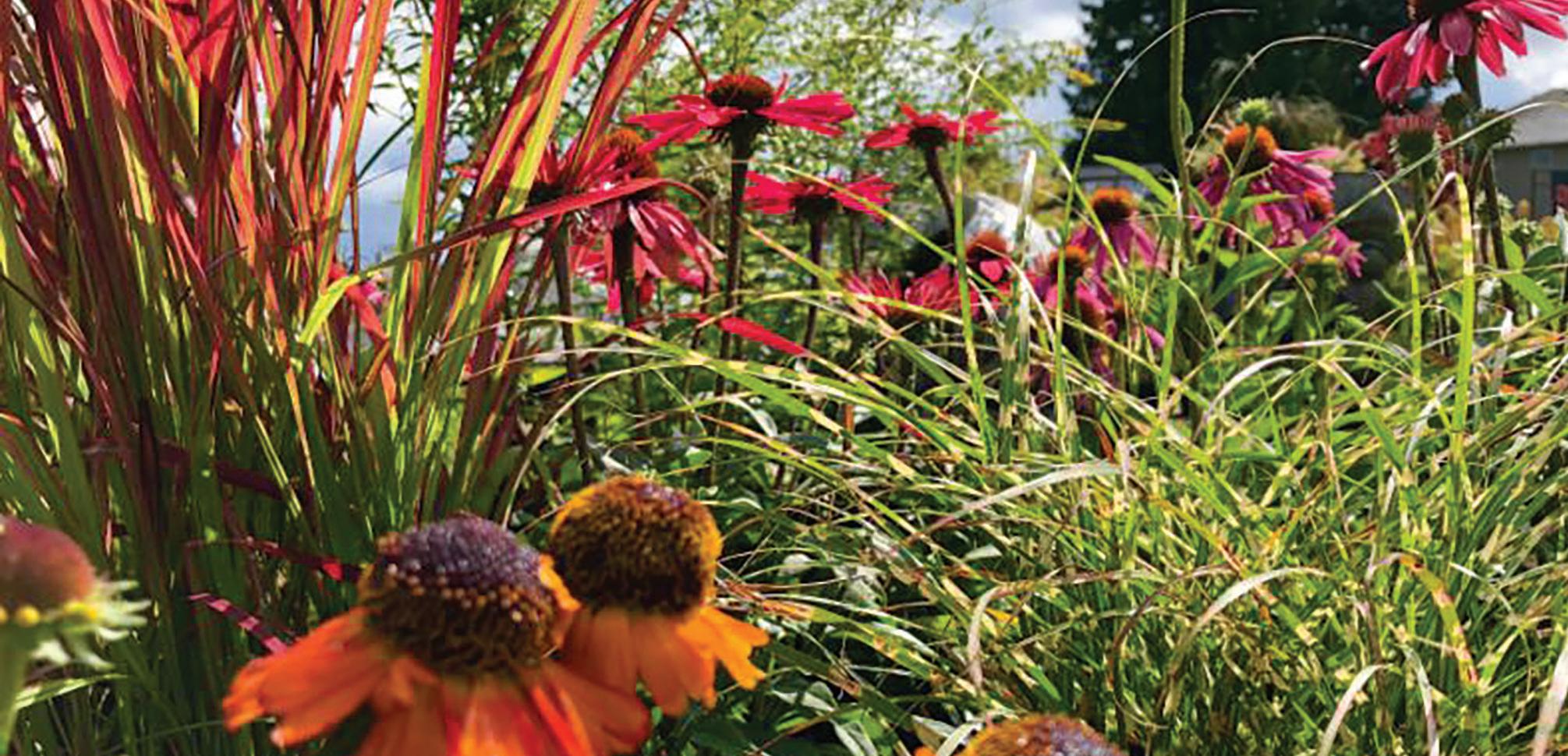
Sumner, WA 98390-0040 253.661.6055, info@wsnla.org
Deadlines: News, Classified ads, Advertising 5pm on February 1, May 1, August 1, and November 1. To place an ad, contact Breanne at (800) 672-7711 or breanne@ wsnla.org. WSNLA reserves the right to refuse any ad which is misleading, unethical, contrary to WSNLA policy, or does not pertain to the industry.
Comments to the Editor: Interested in sharing your opinions and comments with B&B readers? If you take the time to share your thoughtful comments, WSNLA will be sure to share them with B&B readers. Please submit to breanne@wsnla.org.

Executive Director Breanne Chavez e-mail breanne@wsnla.org
Finance & Operations Director Holly Osborne, CPH e-mail holly@wsnla.org
© 2022, Washington State Nursery Landscape Association
THE OFFICIAL PUBLICATION OF Washington State Nursery & Landscape Association(Above) The Whistling Gardener’s (AKA Steve Smith, CPH, Sunnyside Nursery)
Washington State Nursery & Landscape Association - 3
and
Contents Features 10 WSNLA Partners to Establish WSU Endowed Research Chair Ensuring a lasting legacy of local science-based research for the Washington horticulture industry. 12 Pollinator Resources for Your Customer WSDA Pollinator Tastk Force developed resources for to provide customer education. 14 WSNLA Leadership Award Recipients Announced 19 Japanese Beetle Get the latest on findings and eradication efforts.. Columns 4 From the President 6 Executive Director 8 Legislative Update Departments 22 Calendar of Events 22 WSNLA Marketplace 22 WSNLA Career Center
www.wsnla.org WSNLA Washington State Nursery & Landscape Association
WSNLA
Message from the President ]
 Washington State Nursery & Landscape Association
Washington State Nursery & Landscape Association

Awards & Rewards!
Timothy Gray WSNLA President Pacific Stone Company Everett
OK, I just LOVE summer. I love sunshine and warm days; it can rain all it wants in November. Yesterday was the 12th day the Seattle area hit 90f, tying the record. Normally we get 4 of those each year. Spring is my second favorite season. I’m still pretty much bitter about the monsoon-like/cold/miserable spring that lasted March thru June 20th this year. Therefore, I’m not complaining in any way about our distinctly warm summer. Bliss. Joy. Excited. That’s what I feel each morning as another sunny day greets me! I hope you’ve been enjoying this gift from Mother Nature, too. And that it’s been good for your business.
In this issue Executive Director Breanne Chavez presents the recipients of last year’s WSNLA Leadership Awards. Where we honor individuals or organizations for their commitment to our Association. Without our members volunteering to work on the state Board, our chapters, our committees, and our events it isn’t possible to have the representation our industry should have. It’s always important have representation for WSNLA. Not just in times of turmoil for our industry; also, when we’re reaching new levels of success like now. To all of you reading this: WSNLA Needs You. Now, and into the future.
This year marks the 36th year I’ve been involved with 3 professional associations: California Landscape Contractors Association; Washington Association of Landscape Professionals; and our Washington State Nursery & Landscape Association. Age 26 to 62 years. At 26 I was ‘forced’ by Robert Crudup of Valley Crest Tree Co. to become active as part of my San Francisco Bay area job. At 33 I refused to take a nursery sales job in Washington until that company joined both WSNLA and WALP. They joined, I took the job and returned home to Washington. At 39 my new company, Pacific Stone Co., joined the first month we were open. At 62 I now look back at these decades and realize the many Rewards this path has given me. The Awards I’ve received have been numerous, but what stands out is the

Serving the green industry since 1937!
Without our members volunteering to work on the state Board, our chapters, our committees, and our events it isn’t possible to have the representation our industry should have. It’s always important to have representation for WSNLA. Not just in times of turmoil for our industry; also, when we’re reaching new levels of success like now.
To all of you reading this: WSNLA Needs You. Now, and into the future.
WSNLA NEWS
Help Promote Careers in Horticulture
Here’s how:
GardenWashington Q&A
Help build the GardenWashington Career Pages by sharing your career journey. Your story will help shape perceptions and inform individuals interested in entering the field. Visit the WSNLA Career Center at www.wsnla. org/networking to share your story. Be sure to submit a photo to be included.
WSNLA Career Panels – live and/or recorded sessions
Connect with students at horticulture programs via ‘zoom career panel’ sessions, both in live and/or recorded sessions. To make this happen, we need a bank of professionals willing to participate on virtual panels. This will provide students a chance to ask questions to professionals directly and will also serve as online recorded resources.
Careers in Horticulture Videos
life-long friendships (and other intangible things…) that have been the Rewards.
Many of you reading my message have volunteered many times over the years. Thank you for that, but I’m asking more of you now. The Rewards of getting to know such a diverse group of people from all types of businesses is incredible.
So, my challenge to those of you who are now the mangers and owners of the member companies in WSNLA is this: It’s time for you to Be Like Robert, my manager in Sunol, CA. When I was 26, and he ‘forced’ me to become active in CLCA. Look at your organization and find one person to work with and guide them into becoming active with WSNLA. Support and nurture them in this endeavor and both of you will reap many Rewards. The only guarantee I can give to you, and them, is that by volunteering they will definitely see Awards for their efforts, and the Rewards will be too many to count. Until you’re 62 like me and casting thoughts back over the past four decades. I’m back to feelings of bliss, joy, and excitement for those following in our footsteps.
Just for the record, if you know anything about me at all, it should be that nobody has ever actually forced me to do a darn thing. They just have helped me to realize the potential of what I could accomplish, and who I could become throughout my life. I am forever grateful to Robert, and all those who have guided me in this journey.
Thank you all, Tim
The WSDA Nursery Research fund has awarded grant funds to WSNLA to develop and advertise videos promoting horticulture careers. The videos will be used to educate a broad audience about the breadth of careers available, also working to shape perception.
Career Events
Represent your industry at career events hosted by Universities and Colleges throughout the PNW region in 2023. Ambassadors are needed to staff WSNLA tabletops at targeted career events.
If promoting careers in horticulture is something you are passionate about, please join the effort to help raise awareness about and help recruit the best and brightest to the horticulture industry! Contact WSNLA at 253.661.6055 or breanne@wsnla.org to get involved.
Washington State Nursery & Landscape Association - 5
2022 BOARD OF DIRECTORS
EXECUTIVE COMMITTEE
Tim Gray
WSNLA President Pacific Stone Company timg@pacificstoneco.com
Katie Miller
WSNLA President Elect Skagit Horticulture kmiller@skagitgardens.com
Trevor Cameron, CPH
WSNLA Vice President Sunnyside Nursery trevor@sunnysidenursery.com
Kirsten Lints, CPH
WSNLA Treasurer Gardens ALIVE Design kirsten@gardensALIVEdesign.com
Gregory Smaus, CPH, EPC
WSNLA Past President Rock Solid Landscapes gregory@rocksolidlandscapes.com
CHAPTER & CAUCUS LEADERSHIP
Ingrid Wachtler, CPH
Mt Rainier Chapter President Woodbrook Native Plant Nursery 253-265-6271 | woodbrk@harbornet.com
Peter Van Well North Central Chapter President Van Well Nursery 509-886-8189 | pete2@vanwell.net
Megan Pulkkinen, CPH, EPC
Olympic Chapter President Megan Pulkkinen Landscape Design 360-265-5799 | megancph@hotmail.com
Scott Pringle, CPH
Wholesale Grower Caucus Chair Paradise Lake Nursery 206-930-4132 | paradiselakenursery@gmail.com
Jami Burke Horticulture Supplier Caucus Chair Walrath Soil Technologies 253-531-7499 | jami@tewalrath.com
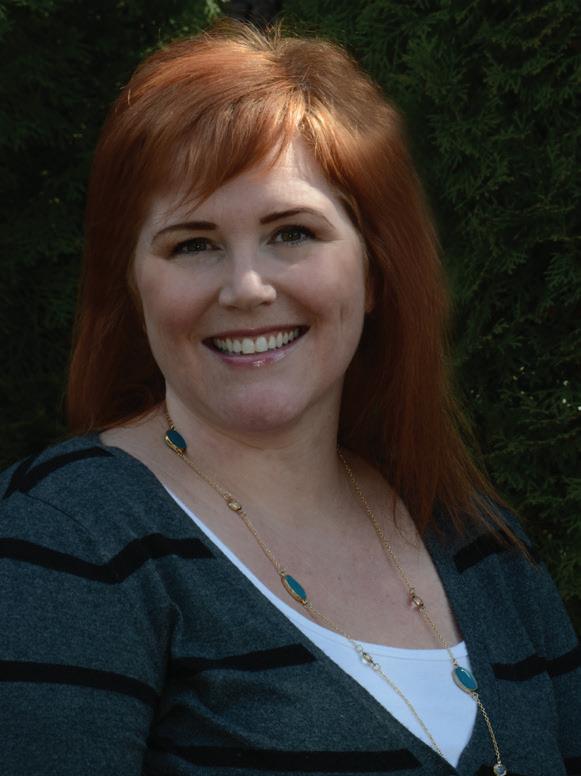
Washington State Nursery & Landscape Association
WSNLA Executive Director
For me, Fall is a time for renewal. Renewal of Earth. Renewal of Energy. Renewal of Spirit. In this column, however, I’m going to focus on renewal of leadership. Specifically, the time is now for the next generation of professionals to step into WSNLA leadership roles providing fresh ideas and strategies on protecting, promoting and advancing our industry.
If you are a WSNLA member business owner, please consider serving on the Board of Directors or as an industry representative in a WSNLA appointed role. If not you, perhaps you have a manager or decision maker within your business that would be interested in bringing voice to your business segment.
Help Shape Your Industry

This year, two long term board members retired from their service on the Board. Scott Pringle, CPH (Paradise Lake Nursery) served 17 years and Ingrid Wachtler, CPH (Woodbrook Native Plant Nursery) served 11 years. Thank you to both of them for their longterm leadership. Serving on the WSNLA Board of Directors provides an opportunity to help shape your industry - and they both have contributed to the betterment of Washington’s nursery and landscape industry.
This also means we need YOU! Ensuring there is a voice for every member segment is essential to effective decision-making. We have several openings, including: WSNLA Vice President; Grower Representative; Retail Nursery Representative; Landscape Representative; and Landscape Design Representative. You can learn more about the roles & responsibilies at wsnla.org/BoardService
Industry Committees & Councils
Did you know WSNLA has opportunities to serve on outside industry committees & councils? New industry leaders are needed to step into these roles, as well. There is a wide variety of options that speak towards individual special interests. As a WSNLA representative, you have the opportunity to bridge communication, educate others about your industry; and ensure no unintended impacts from decision making.
The following positions are open: Urban Forest Council; WSDA Nursery Advisory Committee: Retail Nursery Representative; Washington Pesticide Commission; and Washington Invasive Species Council. Find out more at wsnla.org/GetInvolved.
It comes down to the fact that, you can’t have a voice if you don’t have a seat at the table. Jeanne use to say this and it’s true. I have experienced & witnessed it first hand. The thought of serving on another outside planning committee or task force can be exhaustive, but everytime I have, the industry has always come out stronger because of it. Please consider giving voice to your business and industry by serving on the Board of Directors, an industry commission or council.
Breanne Chavez
The time is now for the next generation of professionals to step into WSNLA leadership roles providing fresh ideas & strategies on protecting, promoting & advancing our industry.
Message from the Director ]
6 - The B&B Magazine
WSNLA
WSNLA Marketing Tools

Provide Access to Your Pre-Qualified Target Market
Your targeted audience is key when investing marketing dollars. Because of this, WSNLA has a handful of industry tailored marketing opportunities for your consideration.
WSNLA marketing opportunities provide efficient and cost effective ways to connect your business with qualifed customers.Advertising in the B&B Magazine or Directory & Buyers’ Guide means your company is in front of your market and not lost in a generalized search. Trying to reach the general public? WSNLA has strategic tools that deliver opportunities to increase sales and exposure. Here’s a quick overview on each of WSNLA’s marketing opportunities:
For Growers, Wholesale Nurseries & Suppliers:

B&B Magazine and Directory & Buyers’ Guide - Users of the print and online magazine and buyers’ guide are industry professionals looking to stay engaged, learn more about and find the products and services they use every day. This is your target market in its purest form.
B&B DEADLINE: 1st of JAN, APR, JULY & NOV |
DIRECTORY DEADLINE: NOVEMBER 4.



FINDPLANTSPNW.ORG - Connect with industry buyers by listing your wholesale availability on this new industry resource. Listings begin at $3.95.
DEADLINE DECEMEBER 1.
WSNLA.ORG - Highlight your business to over 15,000 pre qualified nursery and landscape professionals each year by simply placing an ad on the homepage of WSNLA.ORG for only $750.
SPONSORSHIP (PROseries & Conference) - Align your business with the #1 valued member benefit: education! Promote your business and ensure dynamic and solutionbased content is delivered to your customers and clients.
For Retail Nurseries, Landscape & Landscape Supply Companies Serving the Public:
GARDENWASHINGTON GUIDE & GREEN PASSPORT16,000 guides are distributed at home & garden events throughout Washington. Green Passport coupons drives thousands of dollars in customer sales at participating nurseries. Print advertising begins at $200. Green Passport Coupon: $295
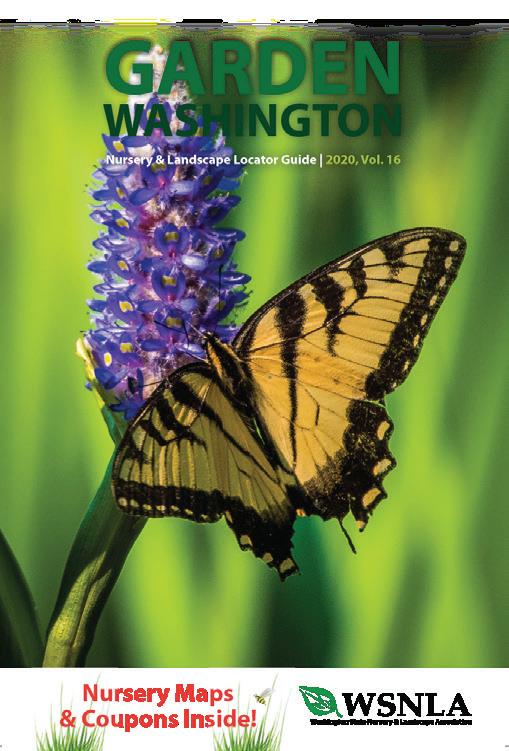
DEADLINE DECEMEBER 1.
GARDENWASHINGTON.COM - $450 annually helps you capitalize on WSNLA’s advertising campaign targeted at engaging younger audiences and non traditional customers with plants and growing.

WSNLA continues to offer these marketing platforms because they serve a unique purpose for our industry and members and are proven to be effective. Please contact WSNLA at (253) 661-6055 or breanne@wsnla.org to help navigate your options. Custom packages can be created and assistance with ad development is available.
Plant Something Pollinator Friendly
This multi-year marketing campaign features promotion of wholesale and retail nurseries and includes education as a marketing strategy to increase awareness of pollinator friendly production practices, plant choices and planting practices, all resulting in an increase of overall nursery crop sales.
Using a variety of platforms, from social media to video to print, this project includes: professionally developed marketing materials to be used throughout the industry, from grower to retail, to identify pollinator friendly plant material at point of sale; Development of consistent materials for a web based, print and social media marketing campaign; Scientifically informed, locally specific resources will be developed and used for education about pollinator friendly production practices, plant choices and planting practices. Established resources will be used when applicable. This project will also connect industry buyers with growers of pollinator friendly plant material via FindPlantsPNW.com, a B2B online resource for sourcing wholesale plant material; and will highlight growing operations using practices to protect and encourage pollinators.
Elements of this project build on strategies identified by the WSDA Pollinator Task Force and WSNLA Nursery Roundtable participants to utilize retail nurseries to educate consumers on the necessity for blooming nectar plants to be available to pollinators throughout their respective active seasons. (SSB 5552, R3.7). All activities support the end result of a 15-25% increase in sales of Washington specialty nursery crop products.
WSNLA awarded $107,890 in WSDA/USDA Specialty Crop Block grant funds to promote, encourage & increase the production, sale, and use of Washington’s specialty nursery crops:
Washington State Nursery & Landscape Association - 7 Washington State Nursery & Landscape Association - 7
Bugs & Blights Legislative Update GardenWashington Connects You With Customers & Clients New Plants & Trees for 2021 Growers Highlight New Varieties 2021 Issue Cover.pdf 3/9/2021 3:21:17 PM
WSNLA’s business membership includes a diverse community of large and small growers, garden centers, landscape professionals and suppliers. It is the intent of WSNLA Board of Directors to ensure legislative activities focus in on overarching WSNLA member needs, while effectively balancing the diversity in business scale and location. To that extent, the following priorities have been identified, with member input, to guide and strengthen WSNLA legislative and regulatory activities throughout the State.
LEGISLATIVE PRIORITIES
Washington Nursery and Landscape Association supports stewardship of the land and the plants and trees that grow upon it.
Our priorities include:
• Promoting a positive business climate for growing and marketing plants and landscape services.
• Protecting our industry from burdensome regulation, taxes and fees.
• Working in a bipartisan manner and focusing on results.
• Ensuring policies are reasonable and based on sound science.
WSNLA will coordinate with other affiliated professional organizations to support our members on agricultural and environmental issues such as:
• Water availability, management & quality
• Urban planning and the inclusion of green spaces
• Pesticide regulation
• Open space taxation
On general business issues, WSNLA will focus on impact to members. Such issues include but are not limited to:
• Labor: availability, training, minimum wage, workers comp, health care, benefits
• Simplifying business regulation including streamlining local jurisdiction business licensing
• Taxes
WSNLA Priorities drafted June – September 2017. Member comment period January – June 2018. Board approved June 2018.
Legislative Update Advocating for Your Business & Industry
Heather Hansen WSNLA Lobbyist
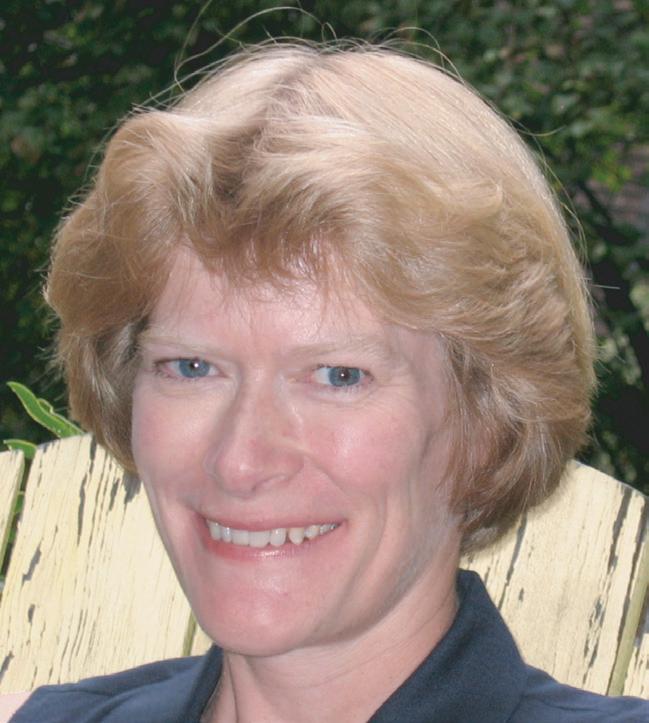
At the time of writing this, candidate mailings were arriving in your mailbox. This election season promised to be an interesting one. Redistricting put many voters, and some candidates, in new districts this year. Half of the state Senators and all state Representatives are up for election. Twenty-six sitting legislators, six state Senators and twenty Representatives, are not running to stay in their seats. Two Representatives are leaving their seats to run for Congress, six others are running for Senate seats. In five districts, the 8th, 15th, 18th, 38th and 47th, two of the three legislators are leaving. That is a significant amount of turnover.
Currently, Democrats hold a 57-to-41 majority in the House of Representatives and a 28-21 majority in the Senate. Thus, to change the current majorities, Republicans would need to pick up nine seats in the House or four in the Senate. In general, the urban Puget Sound area is solidly Democratic while central and eastern Washington are solidly Republican. The suburban districts, primarily in King and Snohomish Counties, are the swing districts where change is most likely.
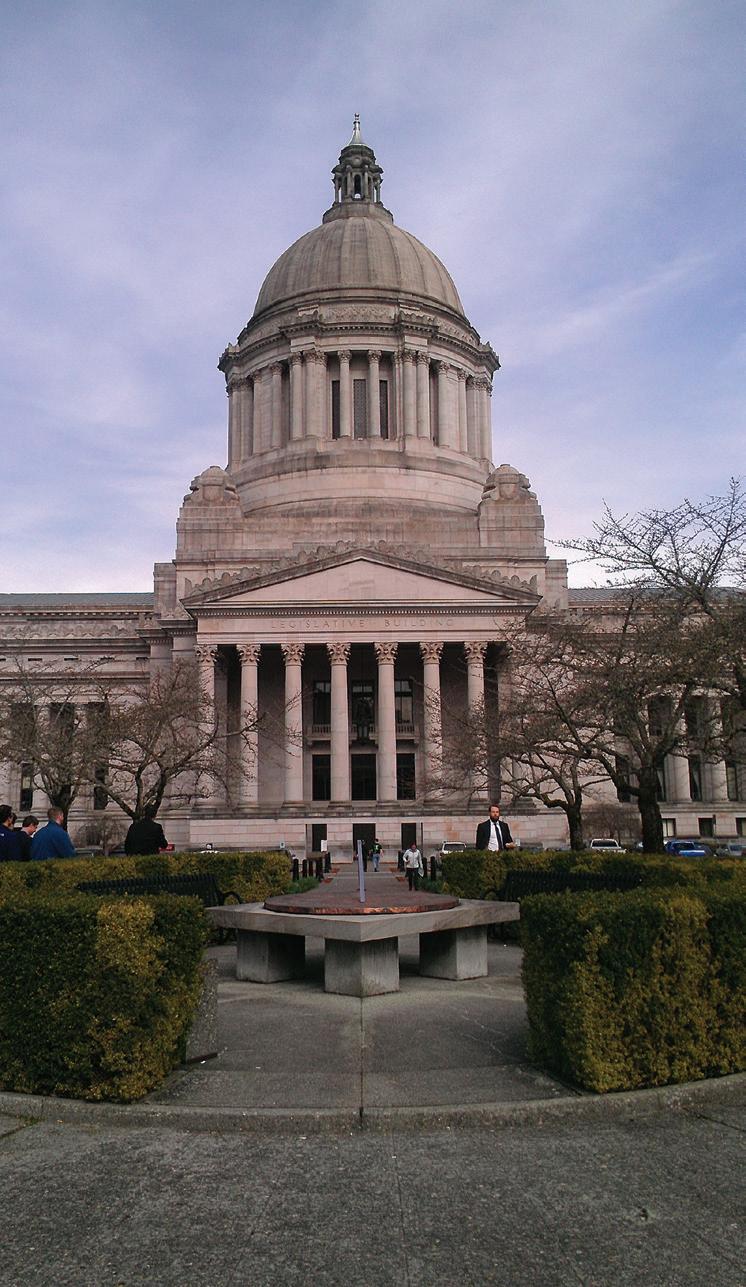
The Washington State primary election was Tuesday, August 2, 2022. Ballots were mailed July 15. As a rule of thumb, before you vote, always get to know the candidates. Every candidate has an online presence. Search for their name and read about their positions. Attend candidate forums. Ask questions about issues you care about. What are their views on taxes, employment law, land use, crime and other issues that may affect your business? What are their priorities for state spending? What are their thoughts about the cost of fuel? Their thoughts about how and where to spend money is a good indicator of their priorities. One easy way to learn about candidates is to see who has endorsed them. If other people you know and trust endorse a candidate, that is generally a good recommendation.
Other changes will be coming this summer as well.
This will be my last column. After 26 years of lobbying, I am retiring. I have enjoyed representing you and getting to know many of you. I have always been an advocate of grass roots involvement in government. A small group of people with focus can make a huge difference. Keep up the good work!
8 - The B&B Magazine
New Climate, Health Care, and Tax Law Includes Boosts for Agriculture
By Evan Lee, Director of Policy and Government Relations at AmericanHort.
The ink is now dry on President Biden’s signature to enact the climate, health care, and tax law known as the Inflation Reduction Act (IRA). While the IRA represents nearly 18 months of congressional work and negotiations, probably few outside of Washington could say what all is included.
Earlier this month, we explored how Congress raised the roughly $737 billion to offset new spending and deficit reduction. Fortunately, several painful tax increases were avoided in the final agreement, which was a key AmericanHort advocacy priority. Now, we look closer at highlights within the nearly $48 billion for agriculture, rural development, drought resiliency, and forestry programs, which are broken out as follows:
$19.5 billion for farm bill conservation programs; $13.3 billion for rural development programs; $4 billion for western drought resiliency; $6 billion for FSA farm loan borrower assistance; and $5 billion for forestry programs.
Although less than initially proposed in the original Build Back Better bill, the new Act spends big on the expansion of green spaces in cities. It invests $1.5 billion in the Urban and Community Forestry Assistance program, a technical, financial, and education assistance program at the U.S. Department of Agriculture (USDA) to plant and care for trees. The funding infusion for grants to local entities represents more than five times the program’s current funding level, which the nonprofit American Forests estimates will plant and protect more than 23 million trees in urban areas over the next 10 years.
The Act provides an unprecedented level of funding, $19.5 billion above the previous level authorized by the Farm Bill, for USDA’s environmental quality incentives, conservation assistance, and quantification of on-farm carbon sequestration. Nursery and floriculture growers stand to benefit the most from new funding for the Environmental Quality Incentives Program (EQIP), which receives $8.45 billion. EQIP helps share the cost with growers for improvements to irrigation, pest management, energy efficiency, and more. Curious whether EQIP is right for you? Learn more at https://www.nrcs.usda.gov/Internet/FSE_MEDIA/nrcseprd1919229.pdf or https://www.nrcs.usda. gov/Internet/FSE_MEDIA/nrcseprd1801047.pdf, or contact your local USDA Natural Resources Conservation Service office, where conservation planners can get you started with free, one-on-one assistance to identify improvements that best fit your needs.
Assistance to growers also comes in the form of debt relief and loan modification for distressed borrowers of direct or guaranteed loans administered by the Farm Service Agency. Details on the program must wait for another day. USDA says it’s still reviewing the new authorities, but it expects to expeditiously implement the $3.1 billion relief program.
In the eleventh hour, Sen. Krysten Sinema (D-AZ) negotiated $4 billion for drought mitigation across the American West, noting the region “continues experiencing historic drought.” The new funding complements $8 billion for water infrastructure enacted last fall in the bipartisan infrastructure bill. The additional $4 billion will support multi-year, local water conservation initiatives, such as incentivizing farmers to cut down on water usage or encouraging conversion to more drought-resilient landscaping.
Meanwhile, as our partners at Pinion (formerly K-Coe Isom) point out, the IRA carries a final ancillary benefit of funding the expansion of USDA climate-focused programs outside of the normal Farm Bill, the re-write of which is currently underway. Pinion analysts write in a recent blog post, “this funding may expedite consideration of the 2023 Farm Bill since many of the conservation programs will already be funded through the Inflation Reduction Act.”Evan Lee is Director of Policy and Government Relations at AmericanHort.

A new program administered by the Washington State Conservation Commission was created during the 2022 legislative session to increase availability of native trees and shrubs used in riparian (streambank) restoration projects.
Called the Riparian Plant Propagation Program (RPPP), this program will coordinate efforts to increase propagation of these native, riparian trees and shrubs, cultivate these plants at regional holding stations (such as conservation district (CD) facilities), and then use them in restoration projects by CDs, salmon enhancement groups, and others when they are ready. Propagated plants that the SCC purchases will be made available for free for restoration projects.
If you are interested in learning more, please contact Alison Halpern, SCC Scientific Advisor at ahalpern@scc.wa.gov

New state plant propagation program may offer new opportunities to support salmon recovery efforts
Washington State Nursery & Landscape Association - 9
WSNLA Partners to Establish WSU Endowed
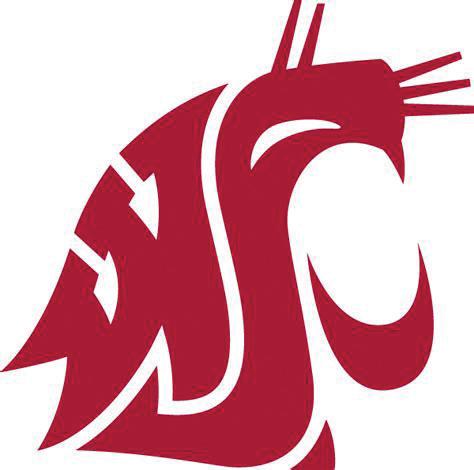
Washington State Nursery & Landscape Association and PNW Christmas Tree Association are partnering to ensure a lasting legacy of industry specific research by funding an endowed research chair at the WSU Puyallup Research Extension that will service ornamental crops and Christmas tree industries, with locally relevant and science based research specific to our Washington climate and needs.
To achieve this goal, the two organizations are launching a capital campaign to raise the required $1.5M funds, which needs to be raised within 5 years to establish the endowment. The campaign will be a muti-faceted effort that encompasses monetary gifts from industry organizations, individual businesses, and a broad network of industry stakeholders.
Monetary gifts have already been committed by the WSDA Nursery Research Fund in the amount of $150,000 and the WSNLA Scholarship & Research Charitable Fund in the amount of $100,000. To reach our goal of $1.5M, we need your help! Please consider a monetary donation helping to ensure the ornamental crop and Christmas tree industries have access to locally relevant, scientific based research to guide businesses as they protect and ensure healthy crops for future generations.

Why Create An Endowment Now?
As the state’s land grant university, Washington State University has historically managed a robust faculty group in Entomology, Plant Pathology, Horticulture, Landscape Architecture and Design, and Crops and Soils. For various reasons, this robust faculty group has been shrinking over the years.
With the retirement announcement of Dr. Gary Chastagner, Plant Pathogist at WSU Puyallup Extention, it became urgent to ensure continuity and access to research. Spanning decades, Dr Gary Chastagner has served both industries, locally and nationally, with valued research that has helped to ensure healthy crops. Creating an endowed research chair at Washington State University Puyallup Extension will provide funds and resources to enable a lasting continuity of applicable research that leads to improved decision by individuals and businesses in the horticulture industry, which in turn can lead to improved outcomes for the environment.
With our changing climatic conditions, the need for science-based research specific to nursery and Christmas tree production in Washington State is more important than ever. Both industries have prioritized plant to Legacy of
10 - The B&B Magazine
Continue on next page. WA State Nursery & Landscape Association & PNW Christmas Tree Association Launch Capital Campaign
Ensure Lasting
Local Science-based Research.
Research Chair WSNLA Washington State Nursery & Landscape Association Our Goal is $1.5M! $1.5M $1.35M $1.2M $1.05M $900,000 $750,000 $600,000 $450,000 $300,000 $150.000 Currently Raised: $250,000
disease and pest management, with an emphasis on:
• finding alternatives to key pesticides;
• trialing plants to expand plant offerings and provide solutions for climate change;
• water quality and management as it pertains to growing clean and healthy plants;
• and efficiency solutions through use of automation.
Establishing a permanent position to ensure that generations of nursery and Christmas tree business owners will continue to benefit from a cutting-edge disease management research and extension program is both prudent and forward-thinking.
Fundamentals of A Research Endowed Chair:
• Endowments at WSU provide a permanent source of funding and exist for all time, or in perpetuity. Only interest income from the investment is spent (approximately 4% annually), strictly in accordance with uses and purposes agreed upon by WSNLA, PNW Christmas Tree Association and WSU.
• Once completed, the endowment would support a faculty position whose research would include that important to the health and future of the ornamental crops and Christmas tree industries. Such research is currently conducted by Dr. Gary Chastagner, who has announced his intention to retire.
• The creation of endowed chairs allows for the faculty position to be prioritized in the hiring process and the College of Agricultural, Human and Natural Resource Sciences (CAHNRS) to move forward in re-hiring the position as soon as the endowment minimum of $1.5 million is met and the position becomes vacant.
• The endowed position would be governed by the Gift Use Agreement and a Memorandum of Understanding outlining a collaborative conversation between all parties to determine the focus and priorities of the position.
• If the $1.5 million goal is not reached within the specified five (5) year period, the Gift Use Agreement will outline a secondary use for the endowment such as research funding for the ornamental crops and Christmas tree industries.
• The CAHNRS Development team will support this effort through providing green industry partners the information they need to secure support for the endowed chair.
How You Can Donate!
To reach our goal of $1.5M by December 2027, we need your help! Please consider a donation to ensure a lasting legacy of research serves the Washington horticulture & Christmas tree industries. Here are a few considerations:
1) No gift is too small. However, if you’re able to give more, please consider doing so - as we know this effort will take all of us investing to achieve the goal of $1.5M.
2) If you would like to pledge a larger gift over several years, there are options to do so. Plus, your committed pledges (to be paid in the future) count towards the $1.5M goal immediately.
$100 per year = $500 $1000 per year = $5000 $10,000 per year = $50,000
3) Your donation is 100% tax deductible
DONATE TODAY!
To learn more about how to donate directly to the Research Endowment Fund to serve our industry, please visit www.WSNLA.org/MakeADonation.
About the WA State Nursery & Landscape Association: The Washington State Nursery & Landscape Association (WSNLA) is a non profit professional trade association proudly serving Washington’s Green Industry since 1937. Our membership is comprised of plant & tree growers, retail garden centers, landscape installation and maintenance contractors, land scape designers, educators & researchers, allied businesses and others who work together with the mission to protect, promote and serve our horticulture community.Learn more at WSNLA.org.
About the PNW Christmas Tree Association: Since 1955, the Pacific Northwest Christmas Tree Association has played a leading role in providing guidance to Christmas tree grow ers in the Northwest. Our purpose is to bring together those involved in the industry for their mutual and public benefit by sponsoring educational and public relations efforts, looking out for environmental stewardship and conducting research. Learn more at www.pnwcta.org.
To achieve our goal to fund the WSU research endowment, we must raise $1,500,000 within 5 years of fund establishment.
Please consider a donation to ensure a lasting legacy of research serves the Washington horticulture & Christmas Tree industry.
Washington State Nursery & Landscape Association - 11
WSDA Pollinator Task Force Develops Resources for consumer education.
Industry guided resources are available for free.
In 2021, the state legislature passed SB 5253 to implement the recommendations of the pollinator health task force. One of those programs is to “educate the public through plant nurseries about the necessity for blooming nectar plants to be available to wild and managed pollinators throughout their respective active seasons.” And specifically calls out the role of independent nursery centers as a “great source of information for home gardeners who turn to these groups for advice on which plants to purchase.”
In order to do so, the WSDA Pollinator Task Force Program, with guidance from industry via WSNLA Roundtables, and WSDA Pesticide Management Division, with assistance from Oregon State University and Washington State University, have been putting together outreach materials that will be made available free to nurseries throughout Washington State.
Two postcards on Plants for Pollinators (for East and West of the Cascades) have already been completed, and are being mailed soon to nurseries across Washington. Both postcards, which you can view on the next page, include year-round pollinator garden planting plans, with further information about seasonal plant selection. PDF versions of both postcards are currently available for download at WSNLA.org.
WSDA will also be providing resources on safe use of pesticides around pollinators in both English and Spanish. These PDFs and more will eventually also be posted on the WSDA Pollinator webpage at www.agr.wa.gov/pollinators.
In addition, a joint WSDA and WSU short course about pollinators and pollinator habitat for nursery staff will be developed. This will hopefully be available next year. Watch for more information to be announced.
For nurseries seeking more information on pollinators and creating and maintaining pollinator habitat, there are a number of good resources already available:
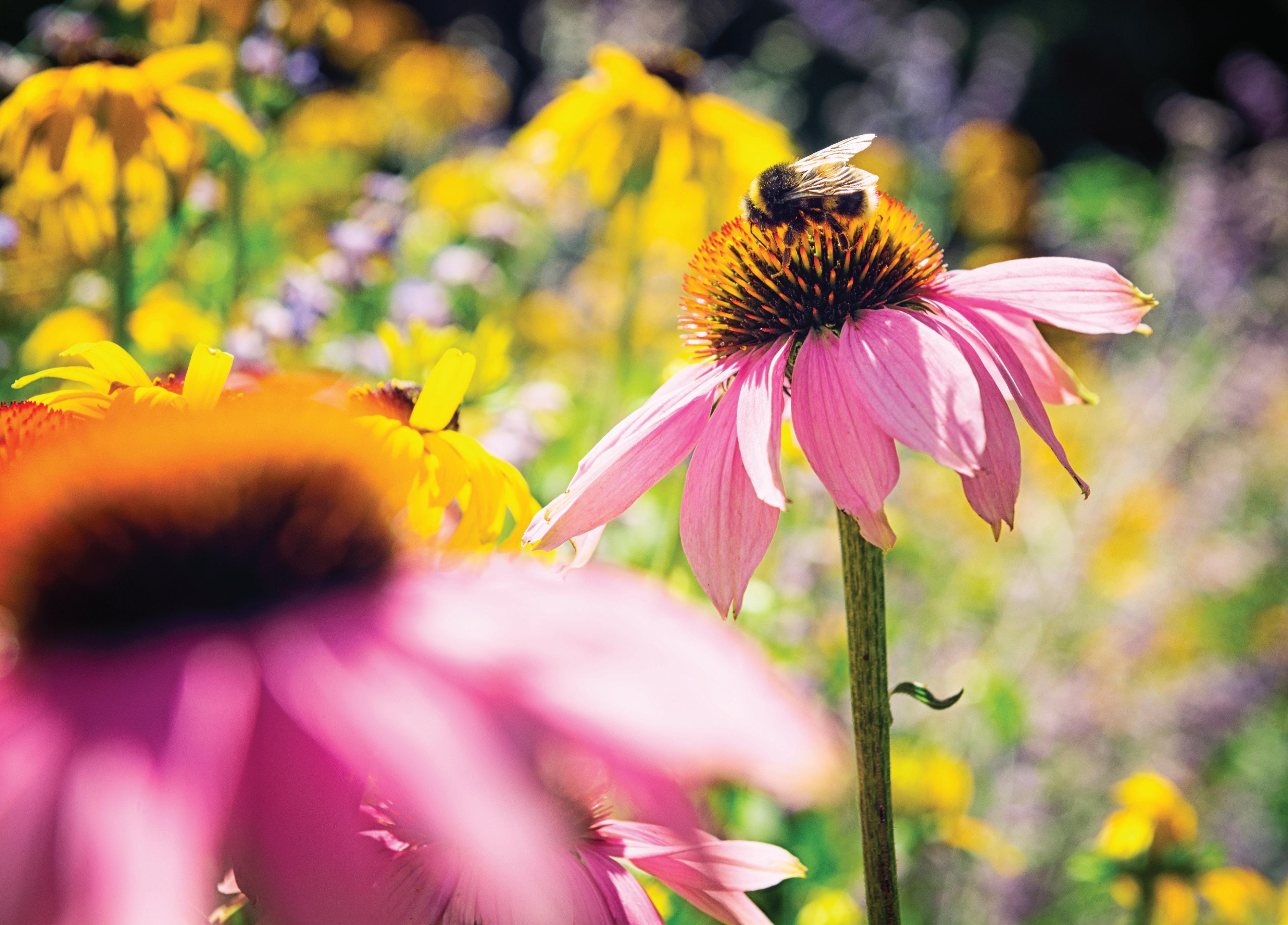
- The Xerces Society has several great guides on their websites at: www.xerces.org/
- OSU’s publication on bees and pesticides is an excellent resource and can be found at: https://catalog.extension.oregonstate.edu/ pnw591
- Oregon Bee Project: www.oregonbeeproject.org/
- Pollinator Partnership has great planting guides that can be found at: www.pollinator.org/guides
For nursery customers who are looking for more information on native plants specifically, the Native Plant Society and Burke Herbarium are excellent sources of information. WSU Master Gardeners plan to post a map of all their demo gardens, which usually include a pollinator area for inspiration. Keep in mind there are good non-native, non-invasive pollinator plants too.
Thanks to SB 5253, more pollinator programs are in the works for beekeepers and growers, pesticide applicators and citizen scientists. Public works projects that include landscaping are now required to have at least 25 percent of the planted area be pollinator habitat to the extent practicable. With some of our pollinator species now critically endangered and with more under threat, we hope more citizens will increase pollinator habitat on their property. In the effort to achieve this, these resources will be helpful tools for nurseries to share with customers.
If you have any questions about pollinators or the work of the pollinator health task force, please feel free to email pollinators@ agr.wa.gov for more information.
12 - The B&B Magazine
Sitka
Baby
Balsamroot,


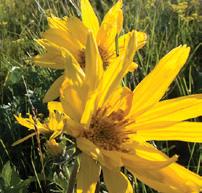


Blanketflower
Godetia,
Pacific aster
Douglas aster
Photos: status, reprisal or for prior rights activity. (Not all prohibited bases apply to all programs.)
Native plant garden


Common name Bloom season and color Bloom times






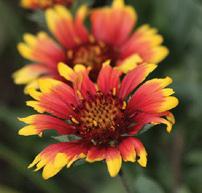

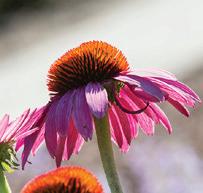
Osoberry, Indian-plum
Kinnikinnick, bearberry




Tall Oregon grape




Red-flowering currant

Sitka willow
Western serviceberry
Douglas meadowfoam
Manzanita
Vine maple


Cascara
Large camas Beach or woods strawberry Evergreen huckleberry
Baby blue eyes
Purple coneflower


Buckwheat


Sulphur buckwheat


Blanketflower
Balsamroot, mule's ears California lilac California poppy Western redbud Globe gilia

Sticky geranium
Nootka rose Blanketflower Western columbine



Oceanspray
Godetia, farewell to spring
Gayfeather, blazingstar

Alyssum
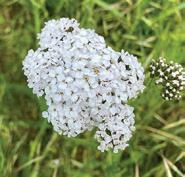




















Smooth beardtongue
‘Capo Blanco' broadleaf stonecrop Birchleaf spirea Summer lupine


















Phacelia








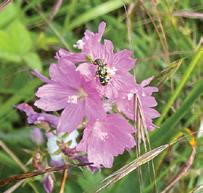
Oceanspray
Tufted hairgrass

Common yarrow Sneezeweed
Nodding onion California goldenrod
Showy tarweed Pacific aster Douglas aster

 Photos: © Oregon State University
Lighter bars indicate periods of intermittent bloom
Ceanothus Oregon grape Vine maple
Nootka Globe gilia
Yarrow Phacelia
© in identity expression), marital familial/parental status, income derived assistance program, political beliefs, genetic information, veteran’s status, reprisal civil rights activity. (Not all prohibited bases to all programs.)
Photos: © Oregon State University
Lighter bars indicate periods of intermittent bloom
Ceanothus Oregon grape Vine maple
Nootka Globe gilia
Yarrow Phacelia
© in identity expression), marital familial/parental status, income derived assistance program, political beliefs, genetic information, veteran’s status, reprisal civil rights activity. (Not all prohibited bases to all programs.)
Washington State Nursery & Landscape Association - 13 Vine maple or Cascara Western redbud Sitka willow Western serviceberry Oceanspray Red-flowering currant Indian plum California lilac ‘Howard McMinn’ manzanita Birch-leaf spirea Kinnikinnick Lupine Western columbine Evergreen huckleberry Douglas aster Camas Sneezeweed or tarweed Annual mix Globe gilia, godetia, California poppy, showy tarweed, baby blue eyes Tufted hairgrass Yarrow Douglas meadowfoamBlanketflower Goldenrod Tall Oregon Grape Nootka rose Rocks for ground-nesting bees Balsamroot Nodding onion Beach strawberry Stonecrop Birch-leaf spirea WET END DRY END Camas 0 5 10 SCALE IN FEET N 60 FEET 25 FEET WEST OF THE CASCADES NATIVE PLANTS for POLLINATORS LEARN MORE: Enhancing Urban and Suburban Landscapes to Protect Pollinators https://beav.es/forthebees agr.wa.gov/pollinators EM 446 • June 2022 Vine maple or Cascara Western redbud Western serviceberry Oceanspray Red-flowering currant Kinnikinnick Lupine Western columbine Evergreen huckleberry Douglas aster Annual mix Globe gilia, godetia, California poppy, showy tarweed, baby blue eyes Tufted hairgrass Yarrow Douglas meadowfoamBlanketflower Goldenrod Tall Oregon Grape Rocks for ground-nesting bees Balsamroot Beach strawberry Birch-leaf spirea 0 5 10 SCALE IN FEET 60 FEET WEST OF THE CASCADES NATIVE PLANTS for POLLINATORS LEARN MORE: Enhancing Urban and Suburban Landscapes to Protect Pollinators https://beav.es/forthebees agr.wa.gov/pollinators Photos: © Oregon State University © 2020 Oregon State University. Oregon State University Extension Service prohibits discrimination in all its programs, services, activities, and materials on the basis of race, color, national origin, religion, sex, gender identity (including gender expression), sexual orientation, disability, age, marital status, familial/parental status, income derived from a public assistance program, political beliefs, genetic information, veteran’s status, reprisal or retaliation for prior civil rights activity. (Not all prohibited bases apply to all programs.) Oregon checkermallow Oregon sunshine Thyme & cvs Common yarrow Anise hyssop, hummingbird mint Balsamroot Poppy mallow, prairie winecup Rocky Mountain bee plant
Phacelia
Lavender
Mexican sunflower Mock orange Japanese Tree Lilac Bluebeard Cosmos ‘Walker's Low’ catmint Zinnia (single-petaled varieties) Black-eyed Susan Canada goldenrod Green rabbitbrush ‘Autumn Joy' stonecrop Aster Oregon checkermallow Purple coneflower Mock orange Phacelia Blanketflower Balsamroot ‘Autumn Joy’ stonecrop ‘Walker’s Low’ catmint 25 FEET Osoberry, Indian-plum Kinnikinnick, bearberry Tall Oregon grape Red-fl owering currant Sitka willow Western serviceberry Douglas meadowfoam Manzanita Vine maple Cascara Large camas Beach or woods strawberry Evergreen huckleberry Baby blue eyes Balsamroot, mule's ears California lilac California poppy Western redbud Globe gilia Nootka rose Blanketfl ower Western columbine Godetia, farewell to spring ‘Capo Blanco' broadleaf stonecrop Birchleaf spirea Summer lupine Phacelia Oceanspray Tufted hairgrass Common yarrow Sneezeweed Nodding onion California goldenrod Showy tarweed Pacifi c aster Douglas aster © 2020 Oregon State University. Oregon State University Extension Service prohibits discrimination in all its programs, services, activities, and materials on the basis of race, color, national origin, religion, sex, gender identity (including gender expression), sexual orientation, disability, age, marital status, familial/parental status, income derived from a public assistance program, political beliefs, genetic information, veteran’s status, reprisal or retaliation for prior civil rights activity. (Not all prohibited bases apply to all programs.) Osoberry, Indian-plum Kinnikinnick, bearberry Tall Oregon grape Red-fl owering currant Sitka willow Western serviceberry Douglas meadowfoam Manzanita Vine maple Cascara Large camas Beach or woods strawberry Evergreen huckleberry Baby blue eyes Balsamroot, mule's ears California lilac California poppy Western redbud Globe gilia Nootka rose Blanketfl ower Western columbine Godetia, farewell to spring ‘Capo Blanco' broadleaf stonecrop Birchleaf spirea Summer lupine Phacelia Oceanspray Tufted hairgrass Common yarrow Sneezeweed Nodding onion California goldenrod Showy tarweed Pacifi c aster Douglas aster © 2020 Oregon State University. Oregon State University Extension Service prohibits discrimination in all its programs, services, activities, and materials on the basis of race, color, national origin, religion, sex, gender identity (including gender expression), sexual orientation, disability, age, marital status, familial/parental status, income derived from a public assistance program, political beliefs, genetic information, veteran’s status, reprisal or retaliation for prior civil rights activity. (Not all prohibited bases apply to all programs.) Tall Oregon grape Crabapple or hawthorn Golden currant Greenleaf manzanita Coneflower Bluebeard Yarrow Annual mix Alyssum, lacy Phacelia, cosmos, Mexican sunflower, zinnia (single petal) Blanketflower Mock orange Kinninnick Rocks for ground-nesting bees Beardtongue Lavender WET END DRY END 0 5 10 SCALE IN FEET N 60 FEET Rocky Mountain bee plant Japanese tree lilac Black-eyed SusanGoldenrod Catmint Oceanspray Anise hyssop Western serviceberry Green rabbitbrush Buckwheat Sedum ‘Autumn Joy’ Balsamroot or Oregon sunshine Sticky geranium or poppy mallow Gayfeather Oregon checkermallow Thyme or stonecrop Garden design: Signe Danler, © Oregon State University Aster ‘Pink Dawn’ viburnum EAST OF THE CASCADES PLANTS for POLLINATORS LEARN MORE: Enhancing Urban and Suburban Landscapes to Protect Pollinators https://beav.es/forthebees agr.wa.gov/pollinators EM 445 • June 2022 Tall Oregon grape Crabapple or hawthorn Golden currant Greenleaf manzanita Coneflower Bluebeard Yarrow Annual mix Alyssum, lacy Phacelia, cosmos, Mexican sunflower, zinnia (single petal) Blanketflower Mock orange Kinninnick Rocks for ground-nesting bees Beardtongue Lavender WET END DRY END 0 5 10 SCALE IN FEET N 60 FEET Rocky Mountain bee plant Japanese tree lilac Black-eyed SusanGoldenrod Catmint Oceanspray Anise hyssop Western serviceberry Green rabbitbrush Buckwheat Sedum ‘Autumn Joy’ Balsamroot or Oregon sunshine Sticky geranium or poppy mallow Gayfeather Oregon checkermallow Thyme or stonecrop Garden design: Signe Danler, © Oregon State University Aster ‘Pink Dawn’ viburnum EAST OF THE CASCADES PLANTS for POLLINATORS LEARN MORE: Enhancing Urban and Suburban Landscapes to Protect Pollinators https://beav.es/forthebees agr.wa.gov/pollinators EM 445 • June 2022 Native plant garden FEB MAR APR MAY JUNE JULY AUG SEPT OCT NOV Common name Bloom season and color Bloom times vary by location and year season Osoberry, Indian-plum Kinnikinnick, bearberry Tall Oregon grape Red-flowering currant
willow Western serviceberry Douglas meadowfoam Manzanita Vine maple Cascara Large camas Beach or woods strawberry Evergreen huckleberry
blue eyes
mule's ears California lilac California poppy Western redbud Globe gilia Nootka rose
Western columbine
farewell to spring ‘Capo Blanco' broadleaf stonecrop Birchleaf spirea Summer lupine Phacelia Oceanspray Tufted hairgrass Common yarrow Sneezeweed Nodding onion California goldenrod Showy tarweed
© Oregon State University Lighter bars indicate periods of intermittent bloom Ceanothus Oregon grape Vine maple Nootka rose Globe gilia Yarrow Showy tarweed Phacelia © 2020 Oregon State University. Oregon State University Extension Service prohibits discrimination in all its programs, services, activities, and materials on the basis of race, color, national origin, religion, sex, gender identity (including gender expression), sexual orientation, disability, age, marital status, familial/parental status, income derived from a public assistance program, political beliefs, genetic information, veteran’s
retaliation
civil
FEB MAR APR MAY JUNE JULY AUG SEPT OCT NOV
vary by location and year season
rose
Showy tarweed
2020 Oregon State University. Oregon State University Extension Service prohibits discrimination
all its programs, services, activities, and materials on the basis of race, color, national origin, religion, sex, gender
(including gender
sexual orientation, disability, age,
status,
from a public
or retaliation for prior
apply
INPSIRE. GIVE. PROMOTE. ADVOCATE.
Each year, WSNLA Ledersahip Award recipients are nominated and selected by their peers for their contributions given the previous year. They inspire others to work collaboratively and creatively. Give of their time to protect and advance our Washington nursery and landscape industry. Demonstrate initiative. Promote a WSNLA Community that is respectful, collegial and supportive. Our 2021 Leadership Award recipients reflect many of these attributes and more. They are also being honored for their contributions to the industry during a year a global pandemic resulted in restrictions and guidelines impacting our regular work experiences. For that, we thank them all!

WSNLA MEMBER OF THE YEAR MEGAN PULKKINEN, CPH & EPC, LANDSCAPE DESIGN KIRSTEN LINTS, CPH, GARDENS ALIVE DESIGN
INGRID WACHTLER, CPH, WOODBROOK NATIVE PLANT NURSERY


I n addition to serving on the Board of Directors, Megan, Kirsten and Ingrid contributed significant time, energy and support to rapidly transition WSNLA programs to continue to serve members and continue to achieve WSNLA initiatives during the pandemic. Their service on the Education Committee resulted in the development, coordination and launch of the online WSNLA PROseries that served over 200 industry professionals in its first year. Their initiative and insight on the Industry Inclusion & Diversity Committee, developed in 2020, provided vision in addressing social inequality and begins the work to improve inclusion and diversity within our industry. Furthermore, their input and guidance resulted in improvements to GardenWashington.com, WSNLA’s consumer site, and to FindPlantsPNW.com, WSNLA’s resource for sourcing plants.
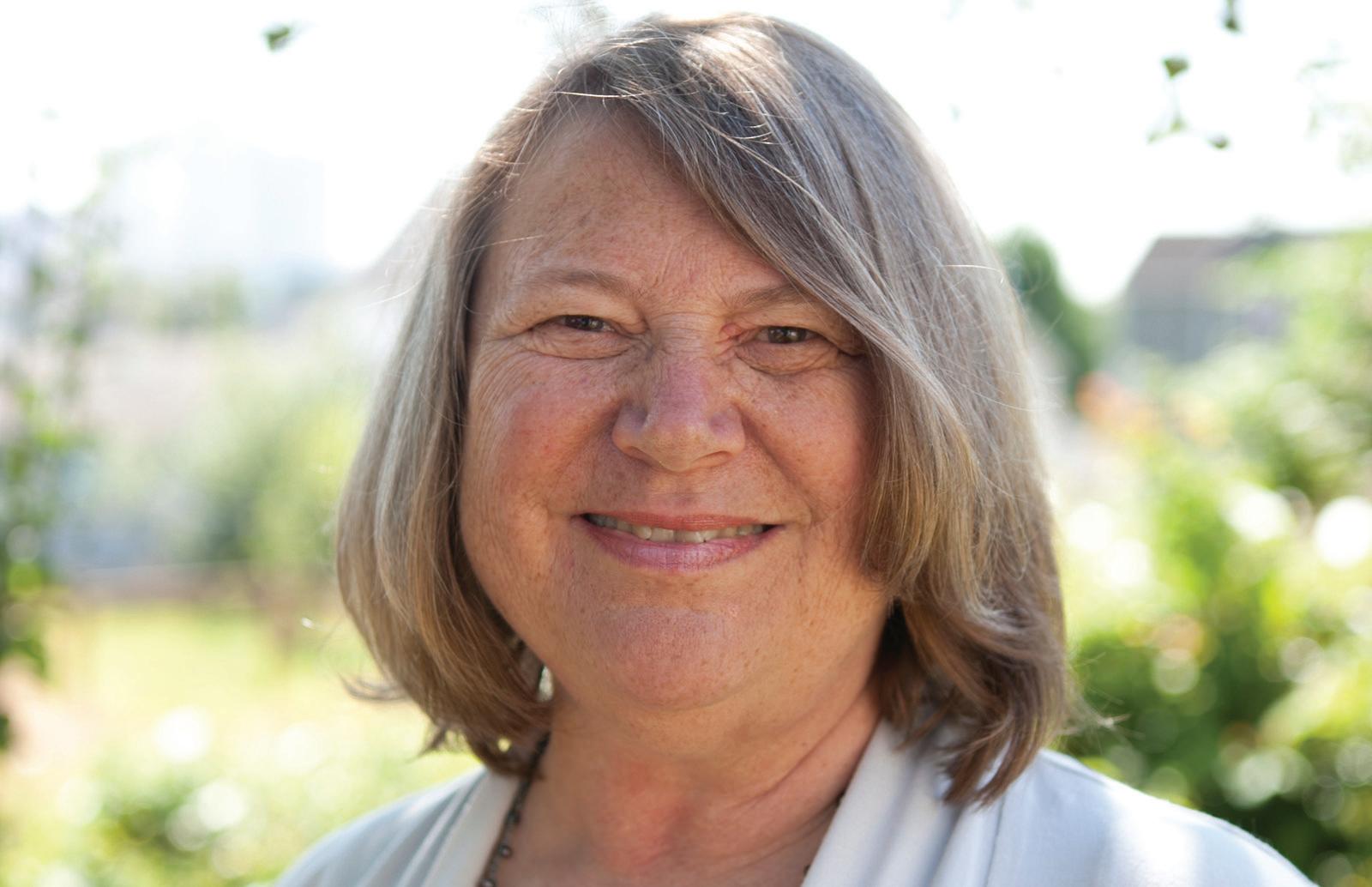 Clockwise from Top Left: Kirsten Lints, CPH, Gardens ALIVE Design; Megan Pulkkinen, CPH, EPC, Megan Pulkkinen Landscape Design; and Ingird Wachtler, CPH, Woodbrook Native Plant Nursery.
Clockwise from Top Left: Kirsten Lints, CPH, Gardens ALIVE Design; Megan Pulkkinen, CPH, EPC, Megan Pulkkinen Landscape Design; and Ingird Wachtler, CPH, Woodbrook Native Plant Nursery.
14 - The B&B Magazine
EDUCATOR OF THE YEAR
CARRIE FOSS. WSU PUYALLUP RESEARCH EXTENSION

Carrie Foss is the Urban IPM Coordinator at WSU Puyallup Research & and Extension Center. She has held a leadership role in urban IPM extension at WSU for over 20 years, and is responsible for educating urban pesticide applicator professionals in IPM, personal safety, pesticide regulations, and environmental protection. She oversees the Hortsense and Pestsense websites that educate homeowners in lawn and garden and indoor IPM. Carrie has been involved with the ecoPRO Certification Program since its inception, and currently serves on the ecoPRO Steering Committee, where she provides guidance on governance and marketing. Most recently she helped guide a review of the ecoPRO Handbook, training and exam that resulted in greater continuity. Her program is a valued ecoPRO partner in delivering sustainable landscape education to the industry.
WSNLA SUPPLIER OF THE YEAR ELLA
VOGELPOHL, RAGEN & ASSOCIATES
From Day of Professionalism to the NW Flower & Garden Show, Ella has given continued support of WSNLA and the industry. When asked, she always makes herself accessible, and brings helpful knowledge and experience to the table. Her support of industry events shows in her ever-present attendance - and always with a smile! It is members like Ella that contribute to the heart of industry associations!

2022
LEADERSHIP AWARDS
CALL FOR NOMINATIONS: DEADLINE OCTOBER 31
Submit to breanne@wsnla.org
WSNLA Industry Leadership Awards
Recognize your colleagues, staff and friends for their industry leadership and dedication to advancing the Washington horticulture industry. Please take a few minutes to review the award criterion below. Most importantly, recognize a peer, staff member, colleague or friend for their advocacy, innovation, involvement or commitment to professionalism and your industry by submitting your nominations by August 31 to breanne@wsnla.org.
Nominations will be reviewed and selected by the WSNLA Executive Committee. WSNLA Leadership Awards feature 9 categories, including:
Harold Young Lifetime Achievement Criterion: Given to a member who has performed an outstanding service and accomplishment spanning a career in horticulture, as well as exemplary service to the industry on an ongoing basis over the long-term.
WSNLA Member of the Year Criterion: Given to a member who has rendered outstanding service to the WSNLA & the industry during the year just past.
Cultivating Community Criterion: Given to a WSNLA member for involvement that has provided notable service in cultivating the WSNLA community, and supporting our organizational mission.
Jerry Rosso “Involvement” Award Criterion: In the tradition of Jerry Rosso, given to a member who has demonstrated consistent commitment and involvement over the long term.
Environmental Excellence Award Criterion: Given to a person or company that significantly improved, protected or repaired the environment through the use of plants and proper horticultural practices.” The award can be given to a person or firm within or outside of the nursery & landscape industry.
Educator of the Year Criterion: Given for meritorious service in any “education” function serving the industry. Has been awarded to Cooperative Extension personnel, due to its strong education mission.
Bruce Briggs’ Industry Advocacy Criterion: Given to a member who has actively supported and shown leadership in advocating on behalf of the Washington horticulture industry in areas such as: legislative and regulatory issues impacting the nursery and landscape industry; promotional outreach advancing the knowledge of the benefits of plants, trees and landscapes; or ensuring meaningful research is identified and funded in support of the nursery and landscape industry.
Supplier of the Year Criterion: Hardgood or non-plant supplier who has shown an above average support of the Association, the industry and the members. The award is to the person, not the company.
Washington State Nursery & Landscape Association - 15
WSNLA
WSNLA CULTIVATING COMMUNITY LAURA WILDFONG, NW NURSERIES
Mentor. Catalyst. Advocate – these words describe Laura well. They are also fundamental to supporting the WSNLA association mission.
Laura’s passion & commitment to developing future professionals is demonstrated through her long time involvement with the Lake WA Institute of Technology Environmental Horticulture Program. As the host of the allied Industry BBQ, she facilitates the opportunity for industry professionals from WSNLA , WALP and APLD to create lasting connections across industry segments.
Most notably, during the onset of covid-19 restrictions Laura remained in contact with the office to communicate her business concerns, give voice to what she was hearing from her customers. This contributed to the success of WSNLA’s advocacy and helped to shape messaging for WSNLA strategic outreach efforts. As a business owner with many demands on her time, Laura finds the energy to give back to the nursery and landscape industry in more ways than one. LEADERSHIP AWARDS
WSNLA ENVIRONMENTAL EXCELLENCE
GREAT PLANT PICKS
Great Plant Picks is the primary education program of the Elisabeth C. Miller Botanical Garden, which debuted in 2001 with the first recommendations for a comprehensive palette of plants for the maritime Pacific Northwest. To date, over 1000 plants have been selected for gardeners living west of the Cascade Mountains from Eugene Oregon to Vancouver BC.
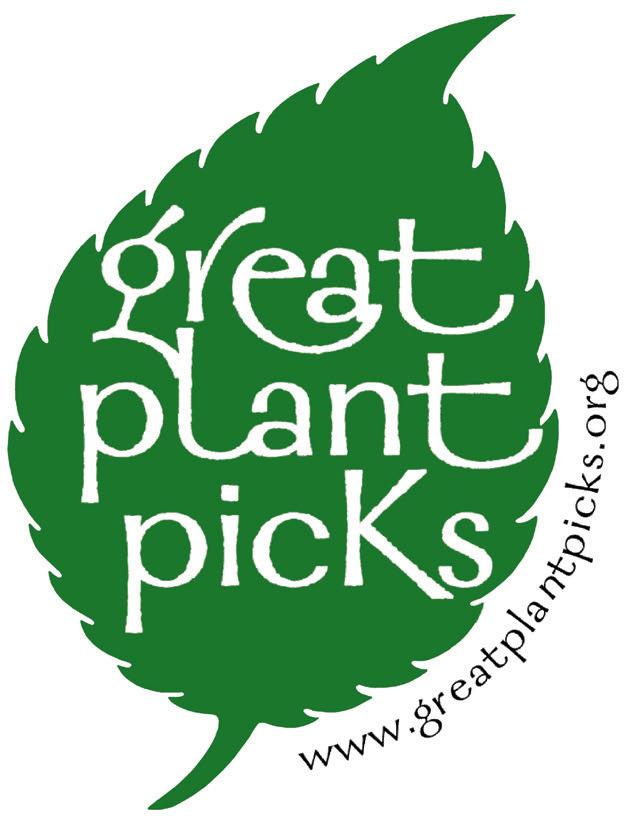
Great Plant Picks is being honored for their behind-the-scenes selection process that focuses on regional plant suitability, plants with a low threshold for pest & disease, that are adaptable to a variety of soil conditions, are not invasive and do not require excessive irrigation. Consideration is also given to ensuring plants are available in the local market. Plants are grown, monitored and observed in test gardens in our area to come up with plant lists that are truly great. Once the plant selections are made, Great Plant Picks channels the information in a relatable, appealing, and easy to access way for public, and professional, use. This great resource, that includes themed palettes such as Plants for Pollinators, Drought Tolerant & Native Plants, and Plants for a Better Planet, works to protect our environment and reaches gardens far and wide throughout the Pacific Northwest.
WSNLA JERRY ROSSO INVOLVEMENT AWARD
TONI CROSS, RETIRED

Toni’s involvement has touched all pillars of WSNLA – from advocacy to education to promotion. A self-proclaimed task master, Toni stepped forward to help with set-up and teardown of events, supported behind the scene planning and served in leadership roles to advance the industry. Her presence at Legislative Days gave voice to industry concerns and support. And, her involvement with WSNLA activities at the NW Flower & Garden Show helped to grow consumer awareness of Certified Professional Horticulturists and WSNLA member businesses. As a WSNLA Board Director, Toni spearheaded the development of WSNLA Legislative Policies which now provides a foundation to guide board decision making, and overall helped to fine tune and focus WSNLA’s strategic goals. Her contributions will serve the industry well into the future.

16 - The B&B Magazine
2021 WSNLA






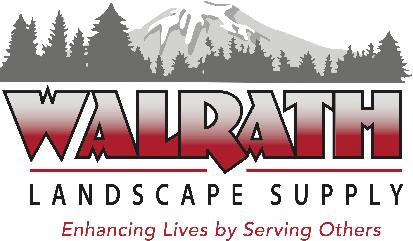























































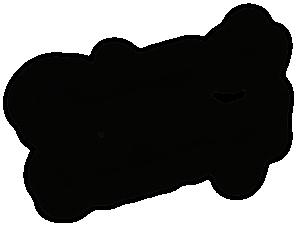

Washington State Nursery & Landscape Association - 17 www.BIRINGERNURSERY.com LLC WALRATH LANDSCAPE EXPERTS CAN HELP WITH ANY JOB OR PROJECT! Wholesale & Retail • Custom Blends Growers Soil • Bark • Compost Nursery Stock • Specialty Sands Turf Mixes • Aggragates and More! BLENDING YARDS THROUGHOUT THE PUGET SOUND Need to blend on location? We can do that! WSNLA Washington State Nursery & Landscape AssociationScholarship & Research Charitable Fund Your gift matters to the future of horticulture! WSNLA.org/MakeADonation (Donations are 100% tax deductibile.)
FindPlantsPNW.com
Connecting Buyers With Growers & Suppliers
DEADLINE: DECEMBER !
WHAT IS FINDPLANTSPNW.COM? FindPlantsPNW.com is WSNLA’s business to business plant and product sourcing guide developed by the industry; for the industry. It is your online resource for wholesale buyers looking for plants, products and supplies that can be accessed anywhere!
AUDIENCE USER: Wholesale buyers of plants and products needed to stock retail nurseries or landscape jobs.
EXCITING NEW FEATURES
Search Tool Map: Users can easily navigate the results which are also accompanied by the mapping tool showing locations.
Customizable Filters: Customize your results by location, convenience or by current availability. Zoom in features help to navigate to the growers and suppliers nearest to you.
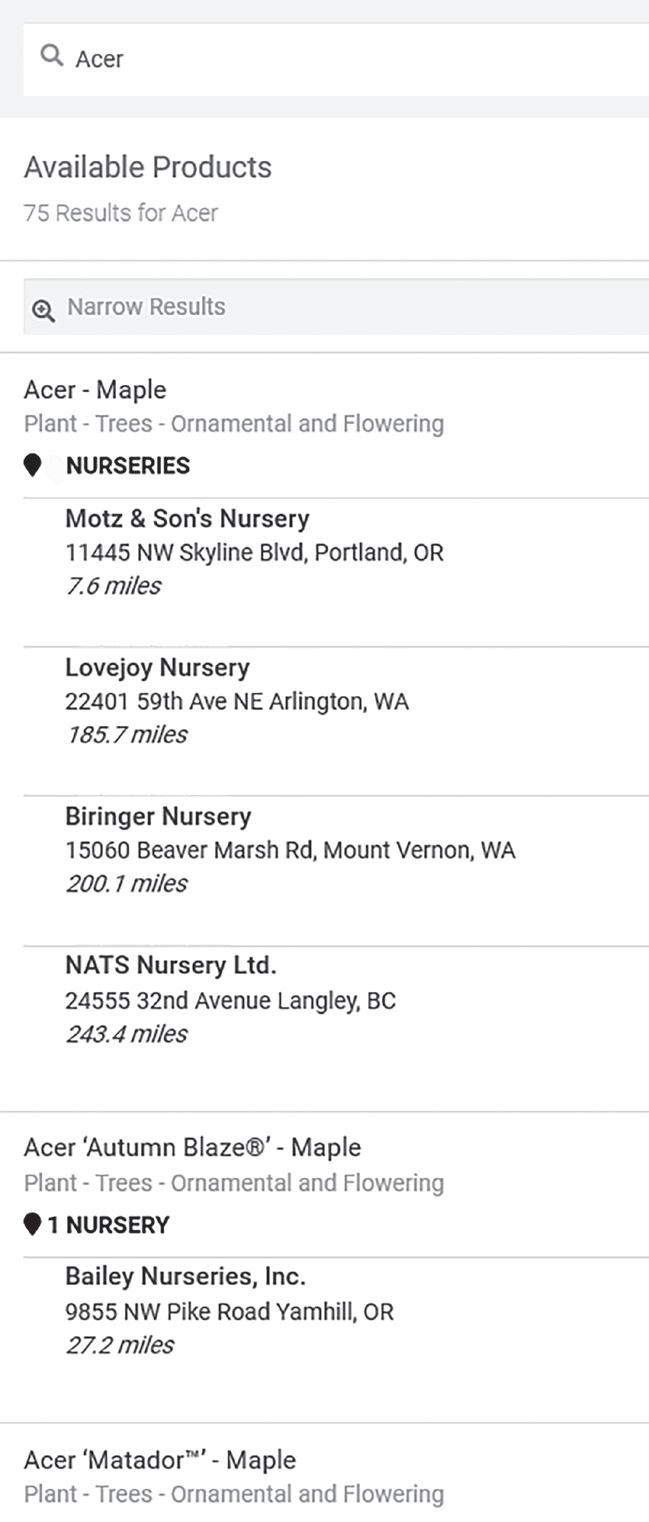

Growing List of Availability & Products: Growers and suppliers can update and list new plants and products anytime throughout the year, making this source an evolving and reliable tool for buyers looking to source material.
CONNECTING BUYERS: FindPlantsPNW.com will be promoted to wholesale buyers throughout the Pacific Northwest region, including retail nurseries and garden centers, landscape contractors and maintenance professionals, landscape designers and landscape architecture firms, landscape, municipalities and parks departments, and more!
ARE YOU INTERESTED IN LISTING YOUR PLANTS, PRODUCTS, OR SERVICES? Contact WSNLA at (253) 661-6055, breanne@ wsnla.org.
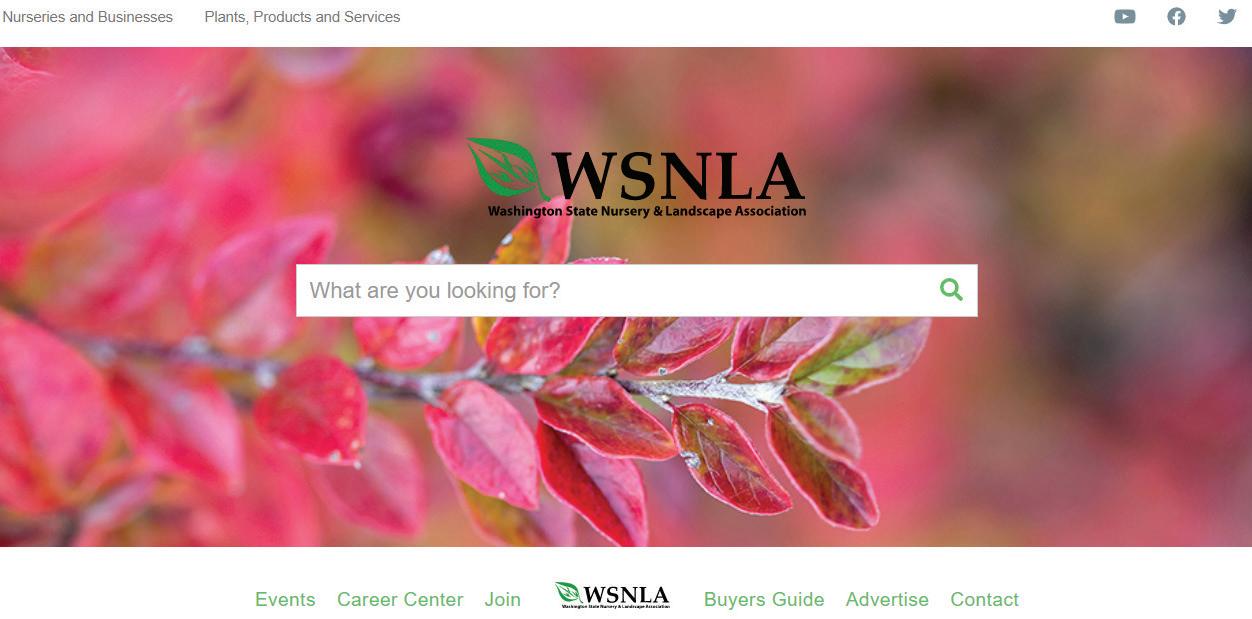
18 - The B&B Magazine
Japanese beetle found in Richland, growing concern for ag products
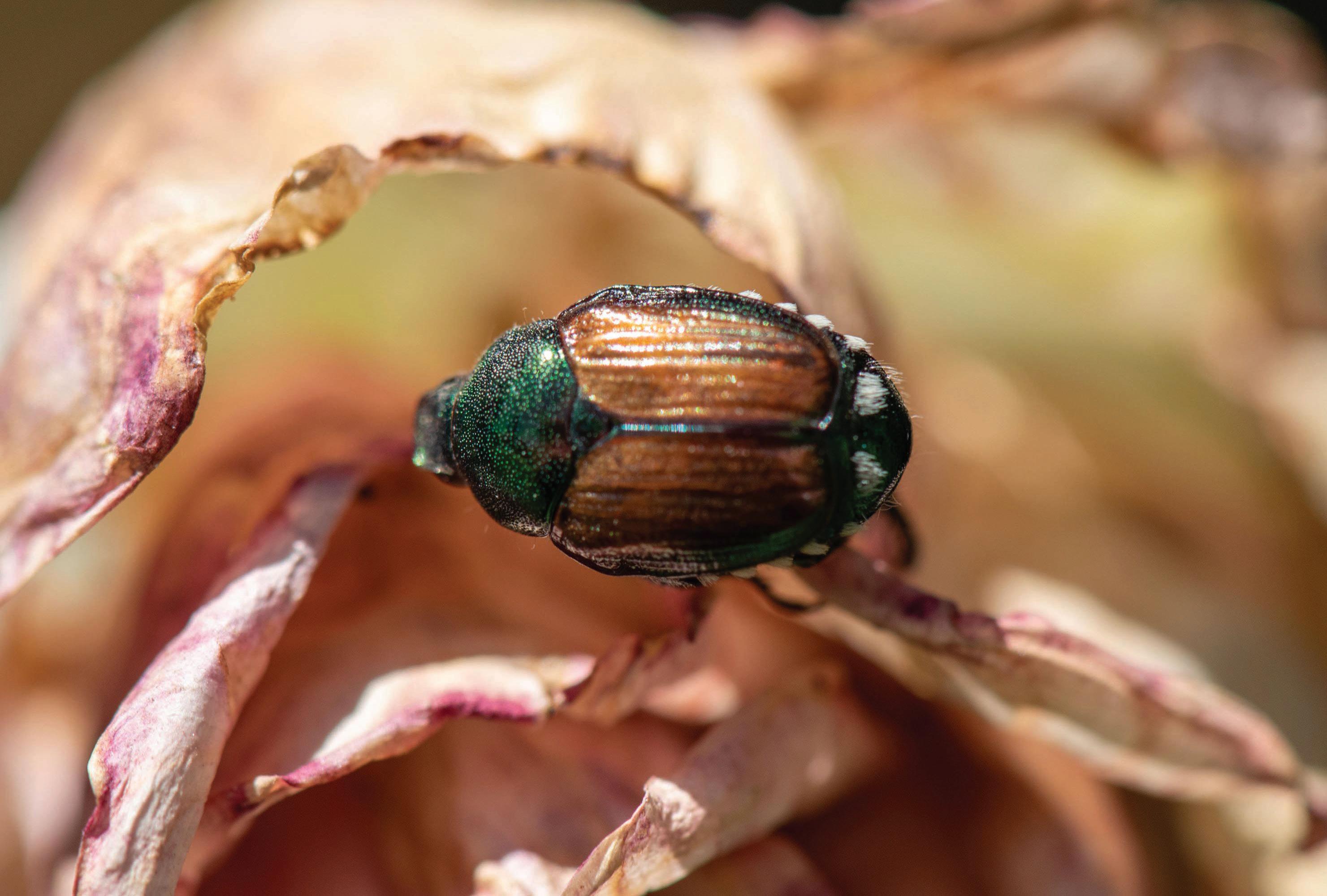
The Japanese beetle infestation is growing exponentially in Washington as state officials work to keep the invasive species at bay.
Thursday afternoon, July 28, the Washington State Department of Agriculture (WSDA) confirmed a Japanese beetle catch found in Richland, more than 35 miles east of the current proposed quarantine zone in Grandview. Earlier this week officials confirmed a detection in Wapato, 30 miles west of Grandview, meaning detections have expanded over 65 miles of the I-82 corridor, a major pathway for much of the state’s agricultural production.
“Finding two detections so far from the original grid in two separate directions suggests the Japanese beetle population is spreading very quickly,” Camilo Acosta, Japanese beetle eradication project coordinator, said. “The longer the invasive pest continues to thrive here, the more difficult and expensive it will be to control.”
A WSDA pest program trapper was doing a routine check on Thursday afternoon in Richland, not expecting to find Japanese beetle so far from the current
infestation. The trap produced a single beetle, and teams began immediately setting up additional traps and checking nearby nurseries for detections.
State officials are urging growers and community members in Yakima, Benton, and Franklin counties to monitor for these beetles. Growers can consult crop protection specialists and community members can consult WSU extension’s website for guidance on protecting their crops and gardens from this invasive pest. WSDA mapping specialists created a real-time detection map that growers can use to determine how close they are to known Japanese beetle detections.
How far have the beetles spread?
WSDA is seeking the public’s help in determining exactly how far the infestation has spread. More than ever, public participation is key in fighting invasive species. With these detections so widespread along the I-82 corridor, WSDA is asking residents – especially in Yakima, Benton and Franklin counties –to look for and report Japanese beetles on their property.
If you live in Washington state and think you see a Japanese beetle, please snap a
Identifying Japanese beetle: Japanese beetle adults are metallic green and brown and have little tufts of white hair on their sides. They emerge – usually from lawns or in other soil – in the spring and feed throughout the summer. From fall to spring the grubs (larvae) overwinter in the soil and slowly develop into mature adults ready to emerge again in the spring.
How can I help?
In helping rid the area of the pest, community members can help by trapping, reporting, and killing the insects on their properties. Residents that live in an area where the beetles have been detected can limit the spread by not moving plants that could harbor the beetles or soil from their property.
“We also urge you to leave your potted plants, or treat them with an appropriate insecticide, before moving outside of the area,” Acosta added.
photo and report the sighting online.
Washington State Nursery & Landscape Association - 19
Eradication plans:
The next steps in the eradication effort include setting traps in and around the infestation area and any new detection sites and establishing a quarantine zone to prohibit the movement of items that could transport Japanese beetles into new areas.
More information on the rule language or the rule-making process is available on the WSDA rulemaking webpage.
After the summer flight season, WSDA will determine if emergency rulemaking may be necessary to expand that proposed quarantine to include additional areas of infestation.
History
In 2020, WSDA first discovered just three Japanese beetles in the Grandview area. Last year the department trapped more than 24,000 beetles. So far this year, teams have caught around 8,300 beetles. Japanese beetles are highly invasive pests of more than 300 plants, including roses, grapes, and hops. The adult beetles damage plants by skeletonizing the foliage. Adults also feed on buds, flowers, and fruit on the plants and are frequently intercepted with air cargo from the Eastern U.S.
STAY INFORMED
Here are two ways to stay informed about WSDA’s Japanese beetle program:

1) Join the Pest Program email listserv. Be sure the box next to Japanese beetle is checked. (You can uncheck topics that you are not interested in.)
2) Join the Japanese Beetle Watch Facebook group. This group will pro vide regular updates about Japanese beetle in Washington as well as al low you to connect with others who are working to prevent the establish ment of this invasive pest.
Bugs & Blights
Sharon J. Collman, Emeritus Professor, WSU Extension JAPANESE BEETLE
This is a slight departure from the usual format in order to provide more detail on the Japanese Beetle.
Per WSDA, Japanese beetles (Popillia japonica) are highly invasive pests of more than 300 plants, including roses, grapes, and hops. The adult beetles damage plants by skeletoniz ing the foliage. Adults also feed on buds, flowers, and fruit on the plants and are fre quently intercepted with air cargo from the Eastern U.S.
Japanese beetle larvae are found in soil associated with the roots of host plants. They are common under turf or sod and can be moved from one location to another in potted plants, infested turf/sod, gardening soil, and yard waste.
In 2021, WSDA detected two Japanese beetles near Grandview and one near Sunnyside. Additionally, a resident reported numerous Japanese beetles devouring her roses in Grandview that summer. In 2022, WSDA trapped over 24,000 beetles in the same area. In August, Japanese Beetle was detected outside the Quarantine zone in Wapato and Richland.
If Japanese beetle were to become established in Washington, it would pose a serious threat to gardens, parks, and farms by destroying vegetation. Costly quarantines would also be established, making it increasingly difficult and expensive to move Washington agricultural products and even nursery plants within and outside of the state.
What is it? It is a beetle (Coleoptera) that feeds on the leaves and flowers of many ornamental and native plants, tree fruit, grapes and other fruit crops. The larvae also feed on grass roots includ ing weedy grasses and lawn grasses (plus nearby roots of ornamental and fruit crops).
Why the concern? Even though the beetles have been a problem for many years in the Eastern U.S., rigorous inspection programs have spared our crops, yards and gardens. Budget cuts have reduced inspections and shifted to monitoring for this insect (if funds are available).
This increases the poten tial for spread. WSDA has deployed a grid of many traps in that area. Traps are deployed near airports, seaports and major highways or in recreation areas where vehicles are that may transport insects. In addition to feeding on native plants crops, and weeds, infestations trigger quarantines, Washington regulations, WSDA containment efforts, citizen conflicts (to spray or not spray), add costs for inspecting imports and exports, create political issues and regula tions that must be passed, environmental damage to recreation areas and loss of tourism. For the nursery industry it increases costs to manage the pests and inspect outgoing ship ments. And so much more.
The fact that the larvae feed on grass roots adds damage to additional areas such as lawns, turf farms, golf courses, cemeteries and parklands. Minor lawn damage first oc curs in the fall by tiny hatching larvae and but ramps up as larger, hungry larvae resume feeding in spring. This is followed by additional damage from crows, raccoons and other insectivores (skunks and weasels) looking for fat larvae to eat.
20 - The B&B Magazine
Scott Pringle, CPH ph 206-930-4132 paradiselakenursery@gmail.com facebook.com/paradiselakenursery
WA State Nursery & Landscape Association
MARKETPLANT
FOR SALE: PLANTS, TREES, LANDSCAPE & NURSERY SUPPLIES, EQUIPMENT, AND MORE!
Specimen Street and landscape Trees in large Root Control Bags. Year around availability, easier shipping, handling and establishment. Mount Vernon. (360) 428-5810. Fax (360) 4281822. www.urbanforestnursery.com. WSNLA MEMBER.
OREGON TURF AND TREE FARMS
SPECIMEN SHADE TREES AVAILABLE in 25 gallon containers and B&B. Availability online at Oregonlawn.com or 800.426.1335


WSNLA MARKETPLACE posts begin at $30. Email your copy to breanne@wsnla.org.
WA State Nursery & Landscape Association
EVENTS
GROW YOUR KNOWLEDGE. FIND SOLUTIONS. CONNECT WITH PEERS. GAIN INSPIRATION.
October 4 | Certified Professional Horticulturist Exam - Plant Identification Section. Location in Puyallup.

The Plant Identification section of the Certified Professional Horticulturist Exam is offered in person only. Cost: $50 members| $90 non members.
October 5 | Certified Professional Horticulturist Online Exam. This section of the Certified Professional Horticulurist exam is offered virtually. Cost: $40 members | $70 non members.
October 24 - 28, 2022 , from 8:30 - 12pm | ecoPRO Certified Sustainable Landscape Professional Training Exam. Location: Virtual. The Puyallup Watershed Initiative is providing ten BIPOC full scholarship for this training. Register at www.wsnla.org/ events.
Watch for more WSNLA and other industry events to be announced on the WSNLA Calendar of Events @ WSNLA.ORG/Events.
WA State Nursery & Landscape Association
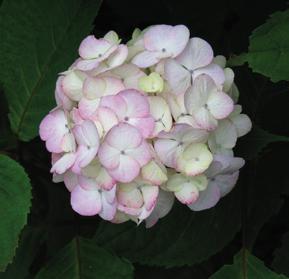
CAREER CENTER
POST OPEN POSITIONS. FIND EMPLOYEES. SEEK EMPLOYMENT. SHARE YOUR RESUME.
The WSNLA Career Center connects employers with qualified applicants; students with internships; and job seekers with potential employers.
Post Your Job Openings
Advertise to over 2500+ nursery and landscape professionals.

Post Your Internships
Internships are an opportunity to gain practical experience in the field. Share your internship opportunities on the WSNLA Career Center and connect with students and emerging professionals.
Post Your Resume
Make it easy for employers to learn more about your employment interests and qualifications.
Get Started @ WSNLA.ORG/Networking
22 - The B&B Magazine

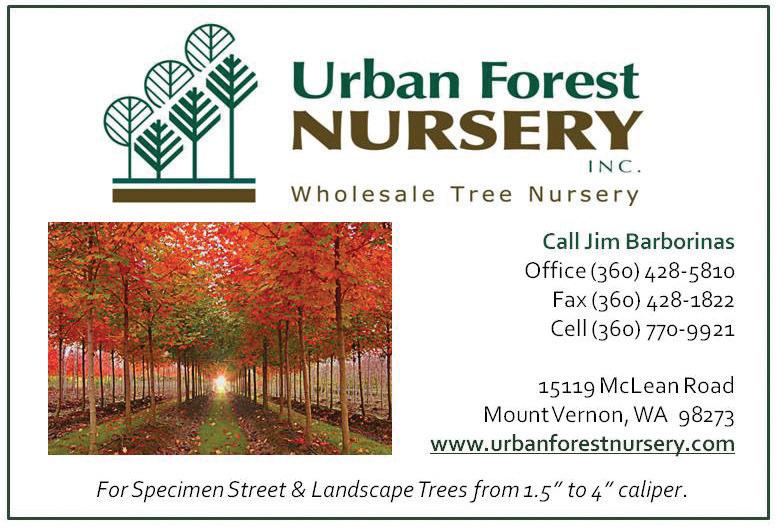
Washington State Nursery & Landscape Association - 23

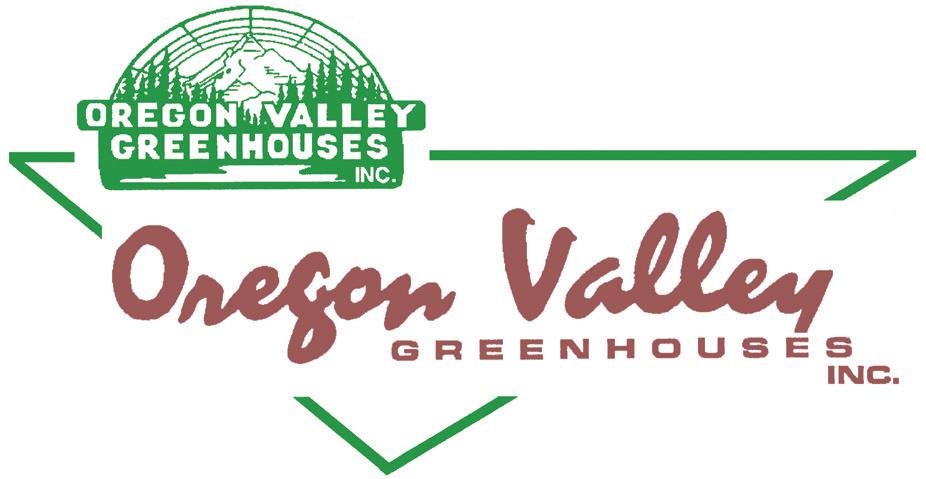





24 - The B&B Magazine Washington State Nursery & Landscape Association PO Box 219 Sumner, WA 98390-0040 Address Service Requested 503-678-2700 GREENHOUSES, HIGH TUNNELS, GROUND COVER, POLY FILM, HEATERS, SHADE CLOTH, CORRUGATED POLY CARBONATE, EXHAUST SYSTEMS, ROLL-UPS, CODE STRUCTURES, PRE-FAB END WALLS, WIRE LOCK, CIRCULATING FANS, TWIN WALL POLY CARBONATE, RV COVERS, SHADE STRUCTURES, LIVESTOCK SHELTERS, COMMERCIAL AND RESIDENTIAL, CUSTOMER SIZES info@ovg.com * www.ovg.com 20357 Hwy 99 E * Aurora, OR 97002

